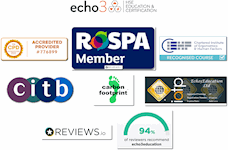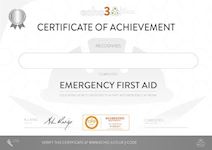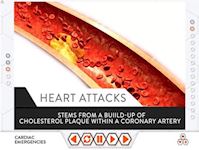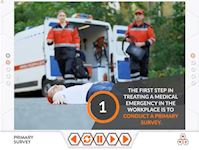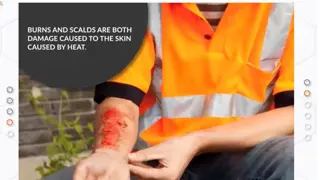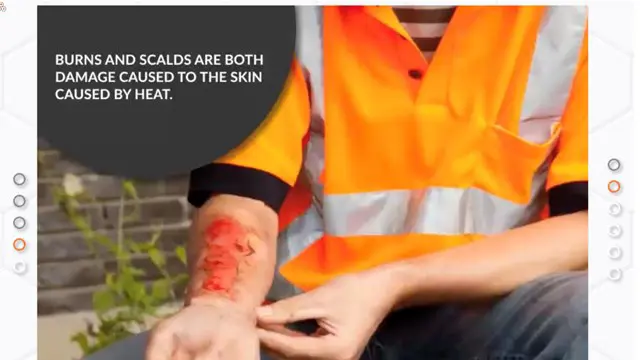
Emergency First Aid at Work (EFAW) - Echo3
Online CPD accredited training course with CPD accredited certificate included
ECHO3 EDUCATION LIMITED
Summary
- Certificate of completion - Free
- Exam(s) / assessment(s) is included in price
Add to basket or enquire
Overview
This Emergency First Aid at Work (EFAW) online course is a great way to train and certify that staff know how to respond appropriately to a wide range of medical emergencies. Particularly in the crucial moments before emergency services arrive.
So in the unlikely event has a medical emergency does occur staff will have the knowledge confidence to respond appropriately.
For businesses, providing an appropriate first aid response is a legal requirement.
Therefore having appropriately trained staff is a requirement.
This EFAW course is meant as an annual refresher or a short term option during COVID. It is not meant to replace full professional first aid training.
This course is available with simple password free access sent directly to emails or texted to phones.
Certificates
Certificate of completion
Digital certificate - Included
Valid for 3 years. Emailed on completion
CPD
Course media
Description
Duration: 50 minutes
Emergency First Aid at Work (EFAW) > What you will learn;
- When emergency services are required
- What is effective care (prior to emergency services arriving)
- Conduct a Primary Survey
- Conduct a Secondary Survey
- Sudden Cardiac Arrest - The Chain of Survival
- AEDs
- Basics of Musculoskeletal system.
- Common Injuries included: choking, wounds, bleeding and shock, burns, scolds, poisons, fractures, sprains and electrical injuries
- Caring for unconscious patients
Course Content;
Emergency First Aid at Work Section 1 | Emergency First Aid
Provision of First Aid in the workplace; Personal safety; Safety of the patient; Primary Survey; Secondary Survey; Respiratory emergencies; Cardiac emergencies; External bleeding
Emergency First Aid at Work Section 2 | Reacting to Medical Emergencies
Fractures, sprains and strains; Burns, scalds, poisons and electrical injuries; Diabetes and epilepsy; Unconsciousness; How to react to medical emergencies
NOTE: This First Aid course is particularly suited to low-risk workplaces that do not require a qualified first-aider but must appoint somebody to be in charge of the first aid arrangements. It is also best practice for employers to provide general first aid training to all employees, which this CPD-accredited course effectively achieves.
Reviews - 4.7 from 750+reviews
- "Very good and informative" 5 stars
- "Simple informative easy to use." 5 stars
- "Im so happy finding this website and courses. Perfect for anyone. Thanks" 5 stars
- "Very fast and straightforward courses." 5 stars
- "Very clear and easy to understand" 5 stars
Certification;
Through out the course there are short 'Knowledge Checks'.
At the end of the course is a short 15 question assessment.
To successfully complete the course candidates are required to achieve 80% in the final assessment. The assessment may be retaken as often as required.
On successful completion candidates will be automatically emailed their completion certificate.
The completion certificate contains the candidate name, course title, date and a validation code which can be authenticated via echo3education.
EMERGENCY FIRST AID COURSE OVERVIEW
In this course, we are going to look at the basics of first aid and how these can be used in a number of situations. It is important to stress that this course is geared towards giving you some basic first aid awareness and should not be considered as a full or professional first aid training programme.
The aims of first aid are:
- To preserve life: Saving lives is the main aim of first aid.
- To prevent further harm: The person who has experienced the injury must be kept stable, and their condition must not deteriorate before medical services arrive. This may include moving the individual away from harm, applying first aid techniques, keeping them warm and dry, and applying pressure to wounds to stop any bleeding.
- Promote recovery: Taking steps to promote recovery may include applying a bandage to a wound.
In an emergency situation you will be encouraged to remain calm, call the emergency services, and provide the most basic first aid procedures such as keeping a patient warm and comfortable while you wait for proper medical assistance.
EMERGENCY FIRST AID FUNDAMENTALS
You cannot help a victim if you become a victim yourself so it is imperative that you evaluate the situation before attempting to administer first aid.
Your own personal safety is priority and you need to be aware of any dangerous factors which might present themselves to you or the patient such as traffic, gas, petrol or chemical spills, live electrical wires, fire or falling objects. There are also human factors, such as bystanders in the way, an uncooperative patient or an assailant who may have inflicted the injuries on the victim. If any of these factors are present, stay well back until the police are able to control the situation.
You should continue to be aware of changes to the situation or environment that could present danger to you or the patient and if there are dangers, which you cannot alleviate, then STAY CLEAR and call the emergency services. Remember to never put yourself in harm's way.
Please remember.
When you first see a victim conduct a primary survey. This begins with checking the environment is safe - You cannot help a victim if you become a victim yourself.
At the victim think ABCs. Clear the airways, check for breathing and circulation. If there is none call the emergency services and commence CPR. Communicate to any bystanders what you are doing and try to enlist their help. They could help by fetching an AED, professional assistance and directing emergency services to your location.
An unconscious patient may have simply fainted. In which case they will be breathing and have a pulse. Ask if they are ok in a loud voice. If they do not wake call the emergency services immediately.
If the patient has an irregular or abnormal heart beat they may have suffered a sudden cardiac arrest. Seconds count. Call the emergency services. Use an AED if possible.
If you suspect someone is having a stroke think FAST. Face, Arms, Speech, Time. Call the emergency services immediately. Keep the patient comfortable.
RECENT REVIEWS
"Very easy to set up and complete, it worked perfectly on my mobile phone. Would definitely recommend to others."
"Excellent course. Well structured and plenty of relevant information.”
"Very informative and relative to the training"
"I found the course very professionally packaged and informative. The information was well delivered. It made it easy to achieve a pass."
"Good and quick service thank you"
"Use echo3 education regularly to purchase courses for my students. The customer service is excellent and efficient."
Who is this course for?
Anyone who wants to boost their confidence in an emergency. Anyone responsible for first aid in business.
Requirements
There are no requirements prior to taking this Emergency First Aid at Work (EFAW) course
Career path
This Emergency First Aid at Work (EFAW) course will help you improve your value to any prospective or current employers.
Questions and answers
Is this a level 3
Answer:Hi Corinne, its not designed as a level 3 course. Its designed to cover the First Aid at Work syllabus.
This was helpful.Which course of efaw is valid for SIA to renew the SIA badge?
Answer:Hi for SIA I believe you need to do a 6hour face-to-face course but you would need to check with them. Best regards, echo3
This was helpful.is this course valid for SIA security top up qualification?
Answer:Hi no it’s not for SIA top up. Regards, Echo3
This was helpful.
Reviews
Legal information
This course is advertised on Reed.co.uk by the Course Provider, whose terms and conditions apply. Purchases are made directly from the Course Provider, and as such, content and materials are supplied by the Course Provider directly. Reed is acting as agent and not reseller in relation to this course. Reed's only responsibility is to facilitate your payment for the course. It is your responsibility to review and agree to the Course Provider's terms and conditions and satisfy yourself as to the suitability of the course you intend to purchase. Reed will not have any responsibility for the content of the course and/or associated materials.
